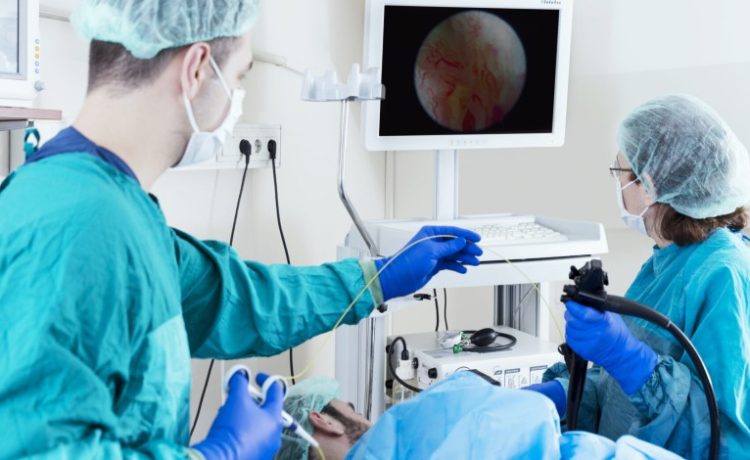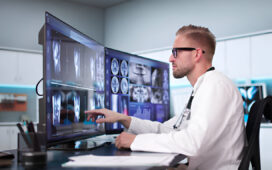Endoscopy, a medical procedure that allows for the internal examination of organs and structures within the body, has undergone a remarkable evolution over the years. From its early techniques to the cutting-edge advancements of today, endoscopy has transformed diagnostic and therapeutic approaches in medicine.
This article explores the historical journey of endoscopy, highlighting key milestones, early challenges, and the revolutionary technologies that have shaped its evolution.
Early Techniques: Pioneering the Path
Bozzini’s Lichtleiter (1806): Innovative Illumination
Philipp Bozzini, a German physician, introduced the “Lichtleiter” (light conductor), an early endoscope illuminated by candles. This rudimentary device allowed visualization of body cavities.
Cystoscopy by Desormeaux (1853): Focus on Urinary Tract
Desormeaux’s cystoscope, initially designed for examining the urinary bladder, marked the early application of endoscopy for internal exploration.
Hirschmann’s Panendoscope (1877): Flexible Design
Hirschmann’s panendoscope featured a flexible tube with lenses, enabling more versatile and less invasive explorations of body cavities.
Challenges and Innovations: Pushing Boundaries
Rigid vs. Flexible Endoscopes: Rigid Endoscopes (Late 19th Century)
Early endoscopes were rigid and limited in maneuverability, posing challenges in reaching certain anatomical areas.
Flexible Endoscopes (1930s)
The introduction of flexible endoscopes in the 1930s addressed maneuverability issues, allowing for exploration of previously inaccessible regions.
Fiber Optics Revolution (1950s): Improved Light Transmission
The integration of fiber optics enhanced illumination, providing brighter and clearer views during endoscopic procedures.
Flexible Endoscopes with Fiber Optics
Flexible endoscopes benefited significantly from fiber optics, facilitating more intricate examinations with improved image quality.
Video Endoscopy (1980s): Transition to Video Technology
The 1980s witnessed a shift from traditional optical systems to video technology, allowing real-time visualization and recording of endoscopic procedures.
Enhanced Diagnostic Precision
Video endoscopy improved diagnostic precision, enabling healthcare professionals to detect and diagnose conditions more accurately.
Modern Advancements: Revolutionizing Endoscopy
Capsule Endoscopy (Early 2000s): Wireless Exploration
Capsule endoscopy introduced miniature, wireless capsules with cameras, enabling the exploration of the gastrointestinal tract without the need for traditional endoscopes.
Improved Patient Experience
Capsule endoscopy enhanced patient comfort, offering a less invasive alternative for diagnosing conditions in the small intestine.
Confocal Laser Endomicroscopy (CLE): Microscopic Imaging Capability
CLE integrates microscopic imaging into endoscopy, allowing real-time examination of cellular structures during procedures.
Precision in Tissue Diagnosis
CLE enhances precision in tissue diagnosis, aiding in the identification of abnormalities at the cellular level.
Endoscopic Ultrasound (EUS): Combining Endoscopy and Ultrasound
EUS combines endoscopy with ultrasound imaging, providing detailed views of the digestive tract and adjacent structures.
Guidance for Interventions
EUS serves as a valuable tool for guiding interventions such as biopsies and drainage procedures.
Challenges and Future Directions
Challenges in Visualization: Navigating Complex Anatomy
Despite advancements, visualizing certain anatomical regions remains challenging, motivating ongoing research for improved visualization techniques.
Integration of Artificial Intelligence
The integration of artificial intelligence (AI) is being explored to enhance image analysis and interpretation during endoscopic procedures.
Innovation in Interventional Endoscopy: Minimally Invasive Therapies
The field of interventional endoscopy continues to expand, offering minimally invasive therapies for conditions such as tumors and gastrointestinal bleeding.
Advancements in Surgical Endoscopy
Surgical endoscopy is evolving with innovations like robotic-assisted platforms, enabling complex procedures with enhanced precision.
Transforming Diagnostic and Therapeutic Landscapes
The evolution of endoscopy, from its humble beginnings to modern innovations, has transformed the landscape of diagnostic and therapeutic medical procedures. Early pioneers laid the foundation for endoscopic exploration, overcoming challenges and pushing the boundaries of medical technology.
















